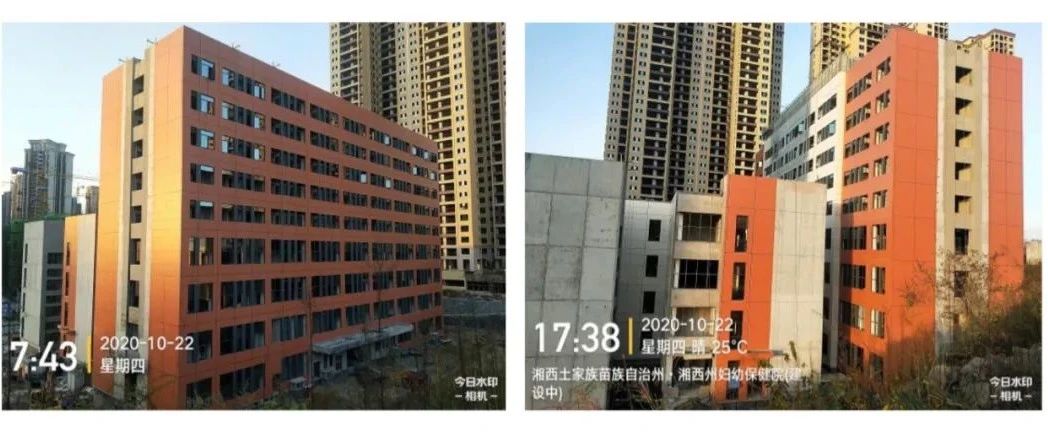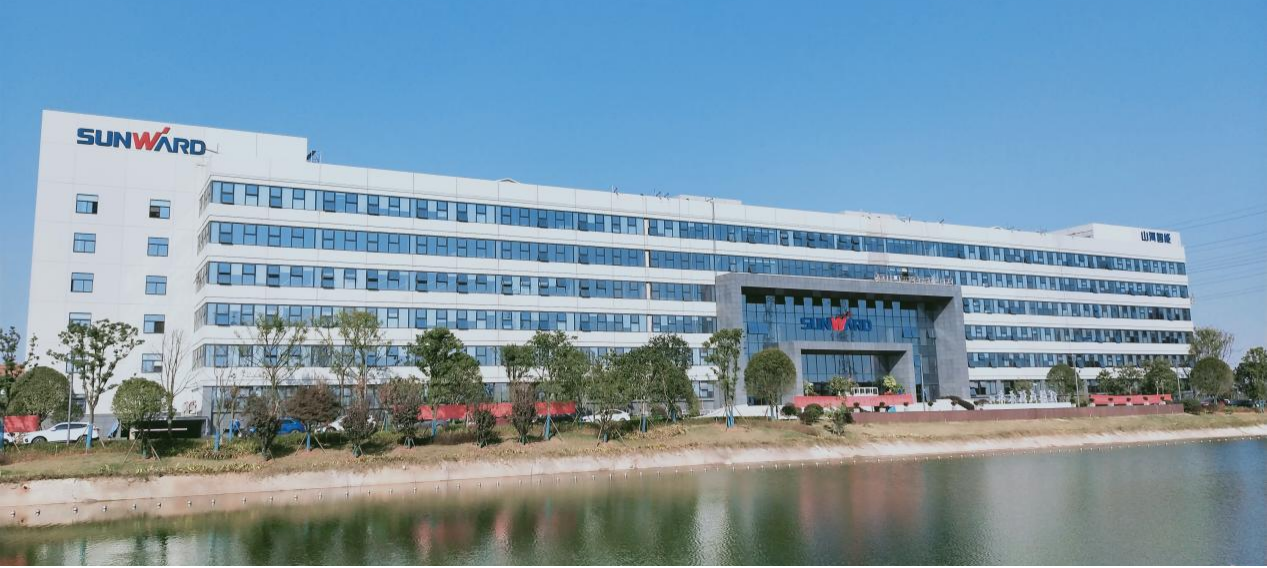A new type of "facial mask" is applied to the building's exterior wall | Goodbond researches on green energy-saving decorative materials for prefabricated buildings, and its key technology research results have reached the international advanced level
Release time:
2021-11-29
Incidents of building exterior wall materials falling off and injuring people have been frequent in recent years, posing a threat to residents' travel safety. How to solve this pain point?
Goodbond and Hunan Dongfanghong Construction Group Co., Ltd. jointly undertake the Changsha Major Science and Technology Project, "Research and Industrialization of Key Technologies for Isolated Green and Energy-saving Decorative Materials for Prefabricated Buildings," which has achieved multiple technological breakthroughs and been promoted for application. The pain point of traditional coatings on prefabricated building exterior walls, which are prone to peeling and falling off, is expected to be completely resolved.
Dr. Shan Ren, General Manager of Goodbond, was interviewed by the Changsha Evening News regarding the "Key Technologies for Green and Energy-saving Decorative Materials for Prefabricated Buildings."
Why Tackle This Issue? Traditional Coatings Easily Fall Off, Affecting Building Lifespan.
When it comes to building exterior wall finishes, the most common things are glass curtain walls, dry-hung stone, ceramic tiles, and coatings (painting). "Ceramic tiles are the cheapest but have the highest risk, as they can easily fall off and injure people. Many regions in China have issued documents prohibiting the use of ceramic tiles on buildings taller than 24 meters. Coatings are the most economical and environmentally friendly option," explained Dr. Shan Ren, General Manager and Project Leader of Goodbond.
In recent years, prefabricated buildings have developed rapidly due to their green and energy-saving characteristics and easy construction, and the prefabricated building industry chain has become increasingly complete. Although the prefabricated building model has changed, the supporting system is not environmentally friendly, such as the use of traditional exterior wall decorative coatings, which consume a lot of materials, require significant labor input, have long construction cycles, and are not environmentally friendly. Among them, the most intuitive issues are poor adhesion and easy peeling off, as well as high energy consumption and carbon emissions. The visible impact of traditional coating peeling is on aesthetics, but the core issue is durability protection. Affected by various environmental media, the steel bars in concrete can corrode, directly affecting the service life of the building.
Goodbond's core competitiveness lies in material adhesion. The research and development team targeted these industrial pain points and introduced adhesion technology into the coating industry to develop a green and energy-saving decorative coating system and materials for prefabricated building exterior walls and other concrete engineering structure surfaces, such as bridges, highways, high-speed railways, and seaport projects. Last year, the project was officially approved, and General Manager Shan Ren led the research team to begin a three-year project.
What Are They Tackling? Applying a New ‘Facial Mask’ to Buildings for Skincare and Beautification.
Traditional exterior wall decorative coatings have five layers from inside to outside: waterproof layer, leveling layer, sealing layer, intermediate layer, and surface layer. Each layer requires different processes and workers, resulting in high labor costs and difficult quality control.
"We combined the inner four layers into one layer, creating an epoxy putty isolation layer according to our self-developed material. The traditional five layers are reduced to two, simplifying the construction process, reducing material usage, and lowering the difficulty of quality control," explained General Manager Shan Ren. While simplifying the structure, the research team also enhanced the material's functionality, making one layer serve the functions of four. For example, the base concrete often has pits or damages. The traditional method is to firstly repair and then apply coating. The material developed by the project can achieve one-step repair and coating, with a solid content of 99.9%, eliminating harmful gas emissions.
These technologies are all originally created by Goodbond, with national patents and independent intellectual property rights, at an internationally and domestically advanced level.
In addition, the project's research team developed a water-based fluorocarbon weather-resistant surface layer, maximizing the fluorine content to provide the surface layer with excellent self-cleaning and colorfastness capabilities. It can be rinsed clean with just a rainfall. Buildings decorated with traditional coatings are prone to be dirty after exposure to wind and rain, and it is not uncommon to see "white buildings turning to grayish after a few years."
In terms of service life, the materials developed by the project have also been greatly improved. "The service life of general coatings is only 4-5 years. Our coatings, tested and verified according to national standards, have a surface layer life expectancy of over 20 years, and the epoxy putty isolation layer is designed for a lifespan of 50 years," explained Shan Ren.
Goodbond has always focused on the lifespan of concrete, previously repairing and maintaining damaged concrete but now aiming to maintain and prevent damage before it occurs. "Previously, we were doing 'treatment,' but now we are doing 'preventive care.' We are the 'doctors for building,'" Shan Ren metaphorically said to the reporter.
How Is the Progress? Cost of New Product Reduced by 60%.
Green environmental protection is not just about the material itself but the entire industry chain. Therefore, the project developed a fully automated green production line to reduce pollution and carbon emissions during production.
On this country's only fully automated green production line for epoxy putty isolation materials, dense pipelines connect from the fourth floor to the first floor, automatically completing over 20 processes including storage, metering, mixing, and packaging. Only a few workers are responsible for the moving and transferring raw materials. On the top floor of the production line, over 20 raw materials are being fed into storage tanks through their respective pipelines. Workers scan the QR codes on the raw material packages, and the corresponding pipeline valves automatically open.

In the central control room of the fully automated green production line, clicking "start" automatically completes all 20 processes, avoiding human error.
"There are many types of raw materials, and if they are added manually, it is easy to make mistakes. The fully automated production line avoids human error," added Shan Ren. The project's production line has an annual production capacity of 20,000 tons. With a service life and cycle of 20 years, the cost of the new product is reduced by 60%.
Currently, the results have been applied to multiple prefabricated building projects, such as the Maternity and Child Health Care Hospital of Xiangxi Autonomous Prefecture, the Hongfenggu Wellness Center of Xiangxi Autonomous Prefecture, and the new headquarters building of Shanhe Industrial City's Phase II project, and are also being tested on multiple bridge projects in marine environments.

Green and Energy-saving Isolated Decorative Projects at the Maternity and Child Health Care Hospital of Xiangxi Autonomous Prefecture

Green and Energy-saving Isolated Decorative Projects at the Hongfenggu Wellness Center of Xiangxi Autonomous Prefecture

Green and Energy-saving Isolated Decorative Projects at The New Headquarters Building of Shanhe Industrial City's Phase II Project
As one of the 22 key industrial chains promoted in Changsha, the prefabricated building industry chain is developing rapidly. Recently, the Changsha Municipal Housing and Urban-Rural Development Bureau, jointly with the Changsha Municipal Science and Technology Bureau and other 12 departments, issued the "Notice on the Implementation Plan for Creating Green Buildings in Changsha," aiming to vigorously promote the creation of green buildings and enhance the beauty of Changsha.
As an important part of the prefabricated building industry chain, Goodbond is facing new opportunities—the hardest part is not the technology but the innovation and disruption of traditional ideas. Currently, isolated green and energy-saving decorative surfaces for prefabricated buildings have not yet achieved factory prefabrication. The next step is to achieve factory prefabrication of decorative surfaces through material research and development and process optimization, making it more efficient and environmentally friendly, and completing the application of a key demonstration project covering 20,000 square meters, promoting the extension and development of the prefabricated building industry chain in Changsha."
Key words:


